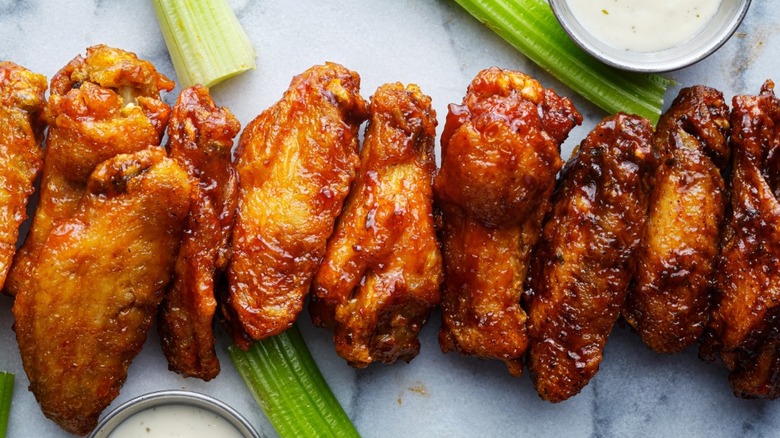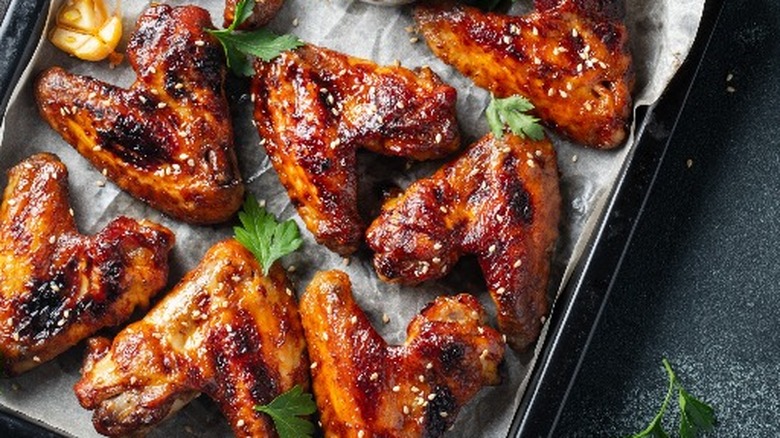Why You Might Want To Think Twice About Deep-Frying Chicken Wings
Dozens of plays exist on the favorite, finger-lickin' classic — the chicken wing. Whether they're served up at a tailgate, sports bar, or the comfort of your home, each wing flavor is unique in its own right, whether it's spicy, sweet, or tangy.
HuffPost reports that the perfect chicken wing has a crunchy outer layer and a moist, juicy interior. The flavor, whether it comes from a sauce or a rub, should complement the natural savor of the bird itself, not overpower it.
In 2019, Americans consumed roughly one billion servings of chicken wings and, Hearthstone Kitchen Cellar reports that people eat about 90 wings on average each year.
When it comes to whipping up a batch for a game day gathering or even a weeknight dinner, many home chefs reach for the deep fryer. But, contrary to popular belief, the absolute best wings in the U.S. aren't bathed in hot oil before getting doused in sauce and gobbled up.
Here's why roasting chicken wings is better than deep frying them
If you're cooking the meat in sizzling, hot grease, you've been eating chicken wings wrong all along. Deep frying wings destroys the flavor of the skin at the cost of making it crisp. The best way to get that winner, winner, chicken dinner with wings is to roast them, according to Slate. This is because wings have a greater ratio of skin to meat than other parts of the chicken.
Roasting the wings ensures caramelized skin and peak flavor. The necessary longer cooking time creates that crispy on the outside, juicy on the inside combo for a perfect bite. Additionally, when chicken wings roast in the oven, the fat becomes rendered and the result is a healthier, tastier alternative to the greasy, fried option (via Cookindocs).
Another key ensuring an excellent chicken wing outcome is to serve the sauce on the side. That way, the wings don't sit in liquid and lose that desired crunch.

